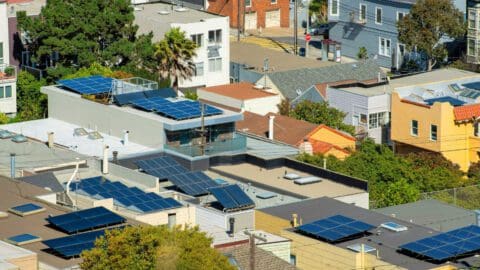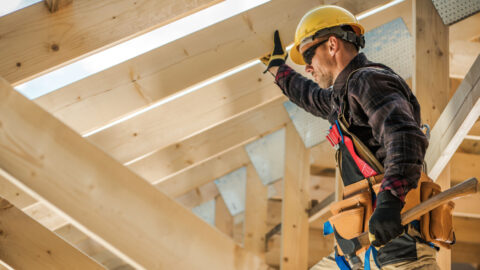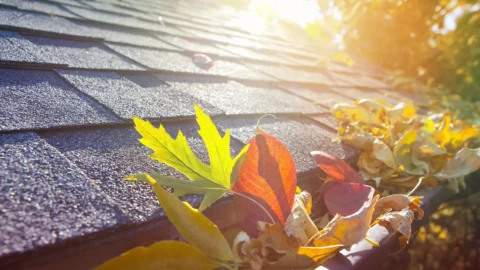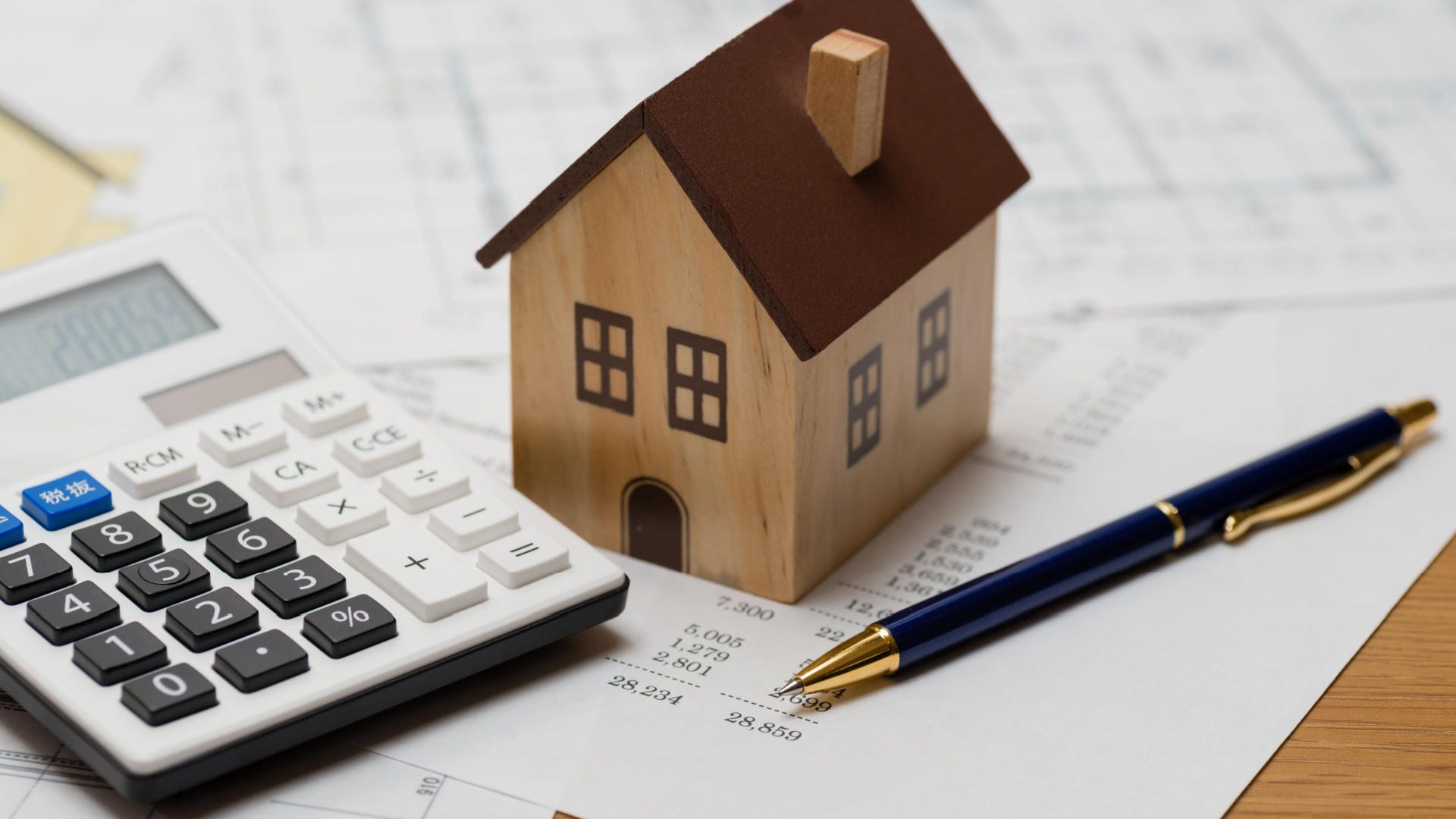Florida, known for its sunshine and beaches, also faces its fair share of weather challenges. As fall approaches, ensuring that your roof is in optimal condition becomes vital. Whether you’re looking to address residential or commercial roofing concerns, this comprehensive guide will equip you with essential roof maintenance tips for fall!
We’re John Hogan Roofing, and we’ve been helping protect local roofs for over 25 years. Keep reading and see what you can do to keep your home safe and protected!
Why Is Roof Maintenance Essential in Florida?
Florida’s unique climate sets it apart from many other states, making it essential for homeowners and business owners to prioritize roof maintenance during the fall season. Here’s a deeper dive into the reasons why you should take extra care of your roof this fall.
Unpredictable Weather Patterns
Fall in Florida is very different from fall in the rest of the United States. While the rest of the nation might be prepping for snow, Florida residents often brace for abrupt rain showers. These sporadic downpours can be intense, and they can easily worsen any pre-existing minor leaks or damages on roofs.
Florida’s fall isn’t only about unpredictability; it’s about duration too. Extended periods of rain, combined with occasional tropical storms, can be a recipe for disaster for ill-maintained roofs. Consistent dampness can lead to mold growth and structural damage if water seeps into the underlying layers of your roofing system.
Hurricane-force Winds
Gusty winds are another common sign of fall in Florida. While these might not seem as menacing as a hurricane, they can dislodge already loose shingles, tiles, or other roofing materials. As a result, what might start as a negligible problem can swiftly escalate into a significant roofing concern. That’s why it’s important to practice proper roof maintenance in the fall, before the summer storms arrive.
Avoiding High Repair Costs with Roof Maintenance
Postponing maintenance or ignoring warning signs during the fall can be a costly mistake. Minor issues that go unnoticed or unaddressed during these months can lead to significant problems by the time winter arrives. The potential costs associated with repairing a severely damaged roof far outweigh the expenses of preventative maintenance.
Preparing for the Unexpected
Lastly, the importance of fall roof maintenance is not just about addressing the predictable but also about preparing for the unexpected. Florida, with its proximity to the tropics, occasionally faces late-season hurricanes or tropical storms. A well-maintained roof is your primary defense against these unforeseen challenges.
While Florida’s fall may not come with the icy challenges of the north, its unique blend of weather patterns makes it crucial for property owners to be proactive. Regular roof maintenance during this season is not just about preservation; it’s an investment in the safety, longevity, and overall health of a property.
Residential Roof Maintenance Tips for Florida

Ensuring that your home’s roof is prepared for Florida’s unique fall conditions can save homeowners a great deal of stress and money in the long run. As the weather shifts, it becomes imperative to give your residential roof the attention it deserves. Here’s an expanded list of essential maintenance actions homeowners should consider:
Comprehensive Gutter Cleaning
Gutters play a pivotal role in directing water away from your home, but they are also prime spots for the accumulation of leaves, twigs, and other debris. Over time, this build-up can lead to clogs, causing water to overflow. This not only risks damaging your home’s foundation but can also lead to undesirable erosion around the property.
- Roof Maintenance Tip for Fall: When cleaning gutters, ensure downspouts are clear and effectively direct water away from your home’s foundation. Installing gutter guards can also be a proactive step to reduce debris accumulation.
Thorough Inspection for Damage
While it might sound basic, a meticulous inspection can be the difference between spotting a minor issue and dealing with a major repair.
- Shingles: Begin by examining the shingles on your roof. Watch out for signs of wear and tear, such as curling, cracking, or missing shingles. Sunlight can deteriorate them over time, making them brittle and less effective against the elements.
- Flashing: These metal pieces are often used to divert water at the intersections and joints of your roof. Ensure that they are intact and not corroded.
- Attic Inspection: Don’t just stop at the external structure. Sometimes, signs of roof damage are more apparent from the inside. Regularly check your attic for any signs of moisture, daylight seeping through the roof, or any sagging areas.
Moss and Algae Removal
In the damp environment that follows the rainy fall season in Florida, moss and algae can proliferate on roofs, particularly on the northern side which receives less sunlight. While they might seem harmless, over time they can compromise the integrity of shingles. Consider using specialized cleaners or a professional cleaning service to tackle this issue without damaging your roof.
Trim Overhanging Branches
Trees add beauty to a property, but in the fall, they can be a roofing hazard. Overhanging branches and palm fronds can scrape and damage shingles, while falling leaves can clog gutters. For this reason, you should trim any branches that come too close to your roof.
Seek Professional Evaluation
Even the most diligent homeowners might miss subtle signs of wear and tear. It’s wise to have a professional roofer inspect your structure at least once a year to ensure that unseen issues are addressed promptly.
By being proactive and attending to these roof maintenance tips for fall, homeowners can significantly extend the life of their roof and avoid unexpected expenses. Remember, in roofing as in life, prevention is often far more affordable than cure.
Commercial Roof Maintenance Tips for Florida
While the primary objective of any roof is to safeguard a structure, commercial roofs differ significantly from their residential counterparts. Their size, structure, and usage vary, thus necessitating specific maintenance strategies. Given Florida’s unique fall climate, it becomes imperative for commercial establishments to be vigilant. Here’s an in-depth look at commercial roof maintenance tips for fall!
Prioritize Regular Professional Inspections
Given the expansive nature of many commercial roofs, it’s easy for minor damages or wear to go unnoticed until they escalate into substantial problems. This is particularly true for flat roofs, which are prevalent in commercial setups. That’s why one of the best roof maintenance tips for fall that we can give is to stay on top of roof inspections.
- Debris Accumulation: Flat roofs can accumulate leaves, branches, and other debris. This build-up can trap moisture against the roofing material, accelerating wear and potentially leading to leaks.
- Ponding Water: Flat roofs are particularly susceptible to ponding water – where water collects and remains stagnant for more than 48 hours. This can compromise the roof’s structural integrity and accelerate deterioration.
- Tip: Schedule bi-annual professional inspections, ideally before and after the fall season, to ensure any potential issues are detected and rectified in a timely manner.
Emphasize Impeccable Drainage
Ensuring that water efficiently and swiftly drains from a commercial roof is critical. Stagnant water can exacerbate wear and shorten the lifespan of roofing materials.
- Regular Drain Inspections: Ensure that drains, gutters, and downspouts are regularly inspected for blockages or damage. Dirt, debris, and even nesting birds can sometimes obstruct these vital pathways.
- Proactive Solutions: Consider the installation of additional drains or scuppers if water pooling is a recurrent issue. Slope adjustments are also an option to guide water towards drainage points more efficiently.
Roof Material Maintenance
Different commercial roofs use different materials, whether it’s TPO, EPDM, or modified bitumen. Each has its maintenance requirements.
- Regular Cleaning: Schedule periodic cleanings to remove debris and prevent the growth of mold, algae, or fungi, which can compromise roofing materials.
- Material-Specific Checks: For instance, EPDM roofs are resilient, but they can be punctured. Regular checks for puncture signs are vital. TPO roofs, on the other hand, might benefit from regular seam inspections.
Monitor Roof Accessories and Installations
Commercial roofs often house several installations – from HVAC units to skylights. Regularly inspect and maintain these to prevent potential roofing issues. For instance:
- Sealants and Flashing: Ensure that the sealants around installations are intact, and flashings are in good condition to prevent any water ingress.
- Weight Limits: Make sure that any equipment added to the roof doesn’t exceed the weight limits, as this can strain the structure.
By paying heed to these pointers, commercial establishments can ensure that their roofing remains in prime condition, effectively safeguarding their property and investments. Regular maintenance not only ensures longevity but also provides peace of mind that the roof overhead is equipped to handle whatever the Florida fall might throw its way.
How to Tell If Your Roof Needs Replacement: FAQs
Understanding when to replace your roof is critical, both for the safety of the inhabitants and for the preservation of the property’s value. Here’s a detailed list of some of the frequently asked questions that homeowners and commercial property owners have about roof replacements.
Q: How Often Should I Inspect My Roof?
A: For optimal roof health, it’s recommended that you inspect your roof at least twice a year, ideally during the spring and fall. This allows you to address any wear or damage incurred during the harsher winter and summer months. However, in addition to these routine inspections, roofs should also be checked after significant weather events like hurricanes, hailstorms, or strong wind conditions, especially given Florida’s unpredictable weather.
Q: What Are the Clear Signs My Roof Needs Replacement?
A: Several indicators suggest it might be time to replace your roof:
- Age: A typical asphalt shingle roof lasts about 20-25 years. If your roof is nearing this age, it might be time for a replacement.
- Shingle Issues: Watch out for shingles that are curling, buckling, or missing altogether. These are signs of end-of-life roofing.
- Granule Loss: If your gutters are collecting granules, and your roof appears to be losing its granular coating, this can be a sign of advanced wear.
- Daylight Through Roof Boards: If you can see daylight coming through the boards in your attic, it indicates a compromise in the roof’s structural integrity.
- Moisture and Rot: Stains, streaks, or obvious signs of water damage on your ceilings or walls can indicate a leaky roof. Also, check your attic for moisture or mold.
Q: How Much Does a Typical Roof Repair Cost?
A: Roof repair costs can vary considerably based on a few factors:
- Nature of the Damage: Minor leaks or replacing a few shingles will cost considerably less than major repairs involving structural integrity.
- Roofing Material: High-end materials like slate or tile tend to be pricier to repair than asphalt shingles.
- Location: Costs can vary based on the region, with urban areas generally having higher labor costs.
- Size of the Job: A small patch might cost just a few hundred dollars, whereas extensive damage could run into thousands.
For an accurate estimate, it’s always best to consult with multiple roofing professionals. Ensure they inspect your roof in person before providing a quote to make sure there won’t be any nasty surprises in the future.
Q: How Can I Extend the Lifespan of My Roof?
A: Regular maintenance is the key. By ensuring proper ventilation, keeping gutters clean, removing debris, and addressing minor repairs promptly, you can significantly extend the life of your roof. Consider seeking a maintenance contract with a reputable roofing company to manage these regular checks.
Q: Is a Partial Replacement an Option?
A: Yes, if the damage is localized to one area of the roof, a partial replacement might be feasible. However, matching new materials with older ones can be challenging, leading to aesthetic inconsistencies. Also, the cost per square foot for partial replacements might be higher than a full replacement. If you’re interested in a partial roof replacement, you should consult with a roofing professional who can explain the pros and cons.
Addressing Roofing Needs: Residential vs. Commercial
Roofing, despite its universal goal of protection, has nuanced demands based on the nature of the structure it covers. Delving deeper into the intricacies of residential and commercial roofing sheds light on their unique characteristics, challenges, and roof maintenance requirements, especially in a state like Florida that’s known for its temperamental weather patterns.
Structural Differences and Design
Residential Roofs: Most homes sport roofs with steeper slopes. This design is not just aesthetic but also functional, aiding in the quick shedding of water and debris. Materials like asphalt shingles, tiles, or metal are frequently used for these roofs, each adding a distinct look and feel to the residence. With these roofs, the biggest thing they need to protect your home from is Florida’s high winds.
Commercial Roofs: Commercial or industrial structures predominantly have flat or low-sloped roofs. Since there is little natural slope, it’s easier for water to become trapped on your roof. For this reason, flat roofing materials emphasize water protection. Some of the most popular flat roofing options in Florida include modified bitumen as well as single-ply roofing membranes like TPO and EPDM.
Installation Complexity
Residential: Installing residential roofs, given the steeper slope, can be a more straightforward process. However, this depends on several factors. Metal roofing is more complicated to install than shingles, for example. Additionally, structures with steep slopes or unique features like dormer windows can be especially challenging.
Commercial: These roofs, given their expansive nature and the need to accommodate structures like airflow systems, drainage, or solar panels, can be more complex. The installation is time-consuming and often requires specialized equipment and expertise.
Roof Maintenance and Repair
Residential: Maintenance here is somewhat simpler. Regular checks for damaged or missing shingles, clearing gutters, and ensuring proper attic ventilation typically suffice. Repairs, given the ease of replacing a missing shingle or cracked tile, can often be quicker and less intrusive.
Commercial: Due to the vast area, commercial roofs demand rigorous and frequent inspections. Issues like ponding water, membrane punctures, or seam damage are common concerns. Repairs can be extensive and might require a portion of the business to temporarily shut down, impacting operations.
Lifespan and Durability
Residential: Depending on the material, residential roofs can last anywhere from 15 to 100 years. For instance, while asphalt shingles might last 15-20 years, materials like slate can endure for a century with proper roof maintenance.
Commercial: Commercial roofs generally have a lifespan of 20-50 years. This range is wide because the longevity is profoundly influenced by the material used, the quality of installation, and the rigor of maintenance.
Cost Implications
Residential: Costs here are usually lower due to the smaller square footage and less complex design. However, opting for high-end materials can elevate the price.
Commercial: The initial installation for commercial roofs, given their size and complexity, is typically higher. Maintenance costs can also be steeper due to the many functions of a commercial roof, like housing essential HVAC systems.
While the primary aim of any roof, be it residential or commercial, is to offer protection, the approach to their care and maintenance diverges. Recognizing these differences is crucial for property owners in Florida, where the climate adds another layer of challenge. By being proactive and understanding the unique needs of each roof type, you can stay ahead of costly repairs and replacements and keep your roof in top shape for longer.
Roof Maintenance Tips for Florida – Video
Hire Florida’s Top Roof Maintenance and Repair Specialists
When it comes to addressing roof concerns, whether it’s a simple repair or a full replacement, you don’t want to entrust your home or business to just anyone. Thankfully, you don’t have to. John Hogan Roofing has over 30 years of experience repairing and replacing roofs in Florida.
This is where John Hogan Roofing comes into play. With over 25 years of experience in Florida, we understand the unique challenges posed by the local climate. To get started fixing your roofing issue, schedule your free roofing estimate! Once we’ve conducted a brief roof inspection and figured out exactly what help you need, we’ll provide you with a customized roofing estimate that’s tailored to your roof and your needs.
We know that it can be hard to find reliable roofers. But with free, no-obligation estimates, you should give John Hogan Roofing a chance and see why we’re still Florida’s top roofers after more than 30 years!
HAVE THE WORK COMPLETED RIGHT THE FIRST TIME
You May Also Like:
Benefits of Integrating Solar Panels with Your Roof in Florida
In the Sunshine State, it’s no secret that the sun shines bright nearly all year long. Florida is not only a paradise for beach lovers but also an ideal location for harnessing solar energy. If you’re a homeowner in Florida, you’ve probably considered integrating solar panels into your home, especially as the state continues to…
Read More15 Crucial Questions to Ask Before Hiring a Roofing Contractor in Florida
15 Crucial Questions to Ask Before Hiring a Roofing Contractor in Florida (And Why They Matter) In Florida, where hurricanes, heavy rain, and intense sunshine are part of everyday life, your roof is more than just a cover — it’s your home’s first line of defense. So, when it comes time for a roof repair…
Read MorePreventative Roof Maintenance Tips for Hurricane Season in Florida
Florida’s hurricane season runs from June 1 to November 30, bringing high winds, heavy rains, and potential roof damage. Your roof is the first line of defense against these extreme weather conditions. Even minor vulnerabilities can lead to costly damage during a storm without proper maintenance. This guide provides essential preventative roof maintenance tips to…
Read More



